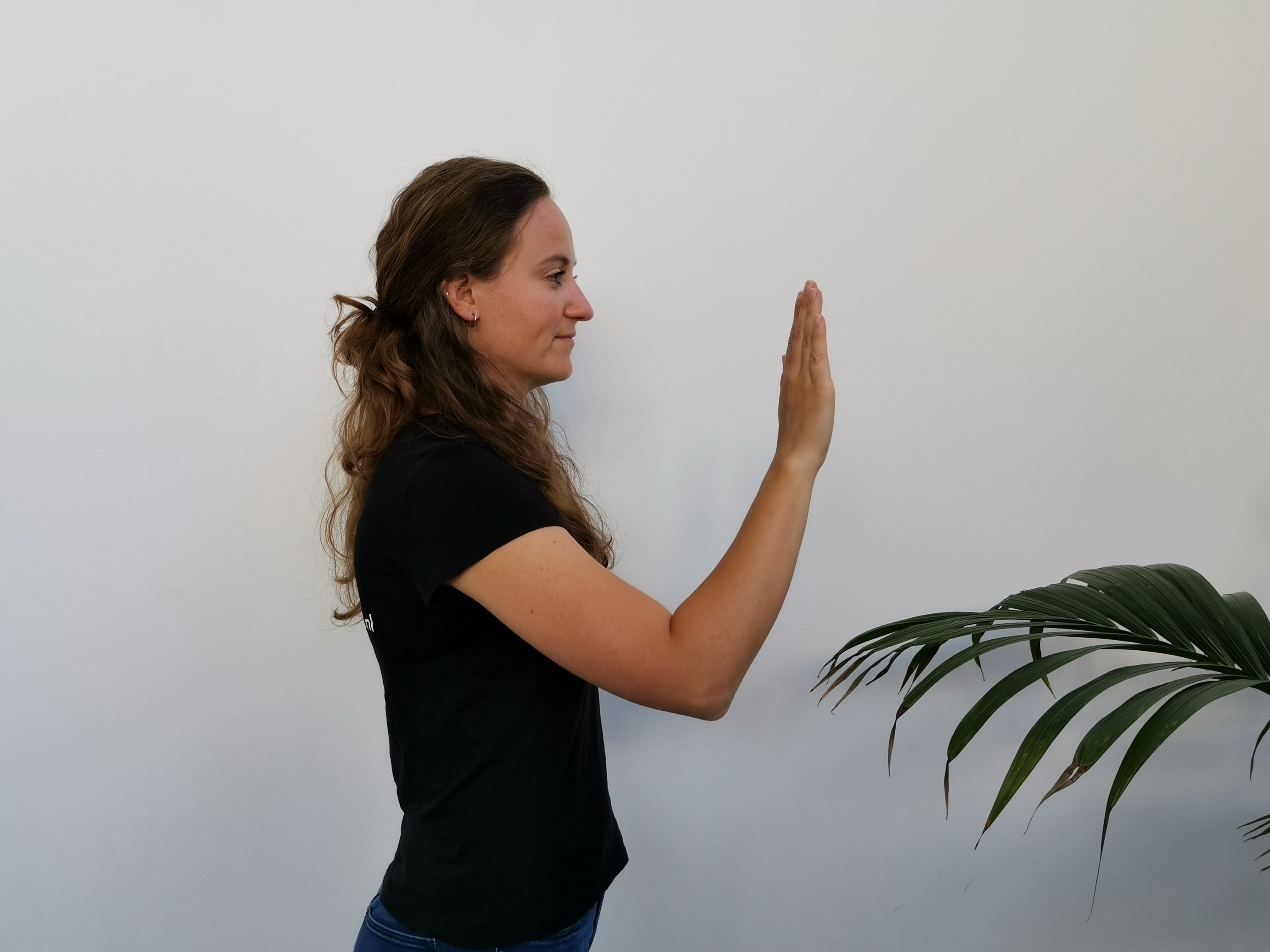
Mallet finger
Each finger consists of three bones called phalanx. The finger joints are located between the phalanges. Those joints allow a finger to bend and extend. We speak of a mallet finger if you can no longer extend the phalanx at the top of your finger. This is the result of a torn tendon. Find all information and matching exercises here.
1. Spalk actieve aanspanning vinger strekker
Houdt het spalkje om de aangedane vinger. Met de gezonde hand fixeer je het kootje van de vinger. Buig vervolgens de bovenste vingerkootjes van de aangedane vinger en strek hem weer omhoog.
2. Buiging vingertop actief
Leg een map op tafel. Schuif de aangedane hand langzaam naar de rand van de map. Als het topje van de vinger over de map komt, mag je hem langzaam buigen en weer strekken.
3. Buiging vingertop actief met fixatie
Leg een map op tafel. Schuif de aangedane hand langzaam naar de rand van de map. Plaats de niet aangedane hand op de aangedane hand. Als het topje van de vinger over de map komt, mag je hem langzaam buigen en weer strekken.
4. Rollen met de bal
Leg de hand met de aangedane vinger op de bal. Rol vervolgens de bal voorwaarts over de tafel, waarbij de hand volledig op de bal blijft. Rol de bal weer terug naar je toe.
5. Tip to tip
Breng de arm op schouderhoogte en raak met de duim de andere vingertoppen aan.
6. Big 5
Breng de hand op schouderhoogte en maak gecontroleerd een vuist.
Medicine ball
Hard. Compact. Qualitatively.

The meaning of a mallet finger
Each finger contains three finger bones (phalanges). These bones are connected through finger joints. The joints allow your finger to bend and straighten. The term mallet finger is used if you have lost the ability to straighten the last finger joint. This can be caused by a torn tendon.
The causes of a mallet finger
A mallet finger is caused when the tip of your finger is forcefully bent. The tendon that normally straightens the tip of your finger can tear off, sometimes taking a small piece of bone with it (avulsion). It can happen without notice during normal chores (for instance making the bed or putting your hand in the back pocket), or during sports (a fall while snowboarding).
The symptoms of a mallet finger
A mallet finger is characterized by an inability to straighten the tip of your finger. The finger can look like a hammer, hence the term ‘hammer finger’. Initially, the injury can be unnoticed. Pain and swelling can gradually develop.
The treatment of a mallet finger
If a piece of bone is torn off (avulsion fracture), surgery may be needed. After the cast is removed, you can start to gently use the finger again.
If the bone is intact and only the tendon is torn, the finger will be placed in a splint. A standardized splint is usually adequate, but sometimes a custom made splint is required. After six weeks the specialist will determine if the tendon has reattached itself. If some attachment is achieved the splint will be continued for 3-4 weeks. If no attachment has occurred splitting is usually extended for a further 6 weeks. This decision needs to be made in collaboration with the hand specialist.
After the tendon has securely reattached itself, a schedule to wean off the splint is formulated. During this phase you will gradually progress to full active movement and use of the finger.
The exercises of a mallet finger
While the splint causes the injured joint to be immobilized, it is important to keep the rest of the finger moving. The exercises below can be used to do this.
Synonyms
Malletfinger, hammer finger, baseball finger
Advice
If you have any questions regarding the exercises, doubt if you are doing them correctly or aren’t sure they are suited for your condition, please contact your physiotherapist for support.
Attention:
Yourbody.coach offers a range of exercises. Yourbody.coach can not be held responsible if you develop injuries. Always consult your physiotherapist or specialist.